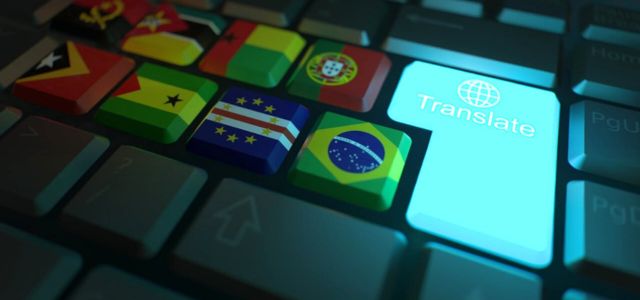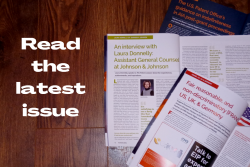A recent High Court judgment in India highlights a potential procedural fairness question in patent examination regarding English translation standards. While patent applicants face rigorous translation requirements under multiple Patent Rules, with severe consequences including loss of priority rights and disregard of claims for non-compliance, what standards should apply when the Indian Patent Office cites foreign-language prior art against applicants? The court observed that translation obligations under Patent Rules, “ought to apply to the respondent authority as well.”
This raises a critical question: if applicants must provide verified English translations to have their documents considered, should they not receive equivalent translations when non-English documents are used to object to their patent applications?
The Advanced Electric Machines question
The issue came to light in Advanced Electric Machines Group v. Controller of Patents (Calcutta High Court, April 2025), where the court set aside a patent rejection after identifying multiple procedural deficiencies. One such deficiency involved the Patent Office citing a Japanese prior art document (D3) without providing any English translation.
Notably, the Japanese prior art (D3) was introduced during the hearing stage, and no translation accompanied it. Even though the applicant attempted to engage with the content in their post-hearing written submissions, the absence of a translation rendered meaningful engagement difficult.
The court stated: “The obligation to make available English translations is also mandated under Rules 20(3)(b), 20(5), 20(6), 21(2) and 61(2) of the Patent Rules, 2002 which ought to apply to respondent authority as well.”
This observation brings procedural equity to the fore, questioning whether examination authorities should be held to the same evidentiary standards as applicants.
The strict framework for applicants
Under Indian law, applicants face detailed and uncompromising translation obligations. The framework is both clear and punitive:
- Rule 20(3)(b) requires applicants to file “a translation of the application in English, duly verified by the applicant or the person duly authorized by him that the contents thereof are correct and complete” for PCT applications not filed or published in English.
- Rule 20(5) sets out the specific components that must be translated into English: the description, claims as filed, text matter of drawings, abstract, amended claims under Article 19, and amendments annexed to international preliminary examination reports.
- Rule 20(6) imposes immediate consequences. If applicants fail to file translations of amended claims “even after an invitation from the appropriate office to do so,” such amended claims and annexures shall be disregarded in the course of further processing.
- Rule 21(2) mandates “an English translation thereof duly verified by the applicant” for non-English priority documents. The consequence under Rule 21(3) is devastating: “The claim of the applicant for the priority shall be disregarded for the purposes of the Act.”
- Rule 61(2) requires that any non-English document in opposition proceedings be accompanied by “an attested translation thereof, in duplicate, in English.”
These rules enforce strict accuracy and procedural compliance, with failure resulting in serious consequences for applicants, such as disregard of claims, loss of priority, or exclusion of critical evidence. Given these stringent requirements imposed on applicants, how do these same standards apply when Patent Offices cite foreign-language documents?
Contrasting application of translation requirements
In another recent case, Maya Appliances Pvt. Ltd. v. Versuni India Home Solutions Ltd. (Madras High Court, April 2025), the inconsistency in translation practices came to the fore. This case involved a patent titled “An Intelligent Cooking Stove System,” which had been granted and later challenged in post-grant opposition. The Patent Office rejected the patent solely on the grounds of lack of inventive step.
The second respondent (opponent) had relied on several prior art documents, including D2 and D3, that were originally in Chinese. The Patent Office noted that these lacked proper English translations and formally excluded them under Rule 61(2). Yet, the Patent Office cited the drawings in D2 to sustain the inventive step objection.
While the Court found this impermissible and untenable, this approach highlights a procedural inconsistency that warrants closer scrutiny: translation requirements that are strictly enforced on applicants are applied differently when the patent office cites foreign-language prior art.
The fairness question
If applicants face loss of priority rights, disregard of claims, or exclusion of evidence for failing to provide verified translations, shouldn’t they receive proper translations when foreign-language documents are cited against them to object to their patent applications or granted patents?
The Calcutta High Court’s observation in the Advanced Electric Machines Group case suggests procedural equity requires similar standards for all parties, including examining authorities.
The rules cited by the High Court, Rules 20, 21, and 61, all emphasize verified accuracy in translations. If such precision is demanded from applicants, how can Patent Offices make substantive determinations based on untranslated foreign documents?
Open questions
The Advanced Electric Machines Group case raises some important questions whose answers will evolve with more such cases:
- Should applicants be able to challenge rejections based on untranslated prior art as procedurally improper?
- How should examination timelines accommodate situations where translations need to be provided?
- What standard of translation should apply, machine translation, professional translation, or the same “duly verified” standard required from applicants?
Looking forward
The Advanced Electric Machines case represents the beginning of a conversation about translation equity. For practitioners and applicants, this indicates that procedural challenges based on translation inadequacies may gain traction where fundamental fairness is at stake.
Whether this observation evolves into established practice will depend on how the Indian Patent Office responds and whether the courts in the future build upon this foundation to create more definitive standards for English translation in patent examination in India.

Written by Rahul Adey
Managing Partner, Rahul Adey & Associates

Written by Ruchi Bhatnagar
Principal Associate, Rahul Adey & Associates
You may also like…
Pravin Anand conferred with the APAA Enduring Impact Award
Pre-eminent IP Lawyer and Managing Partner of Anand and Anand, Mr Pravin Anand, has been conferred with the...
The quiet power of confidentiality clubs in SEP litigation
In standard essential patent (SEP) disputes, especially those involving FRAND (Fair, Reasonable, and...
A $10 million patent win reduced to a $1 lesson in damages
In a decision that will resonate as a stark warning to patent litigants, the US Court of Appeals for the Federal...
Contact us to write for out Newsletter














